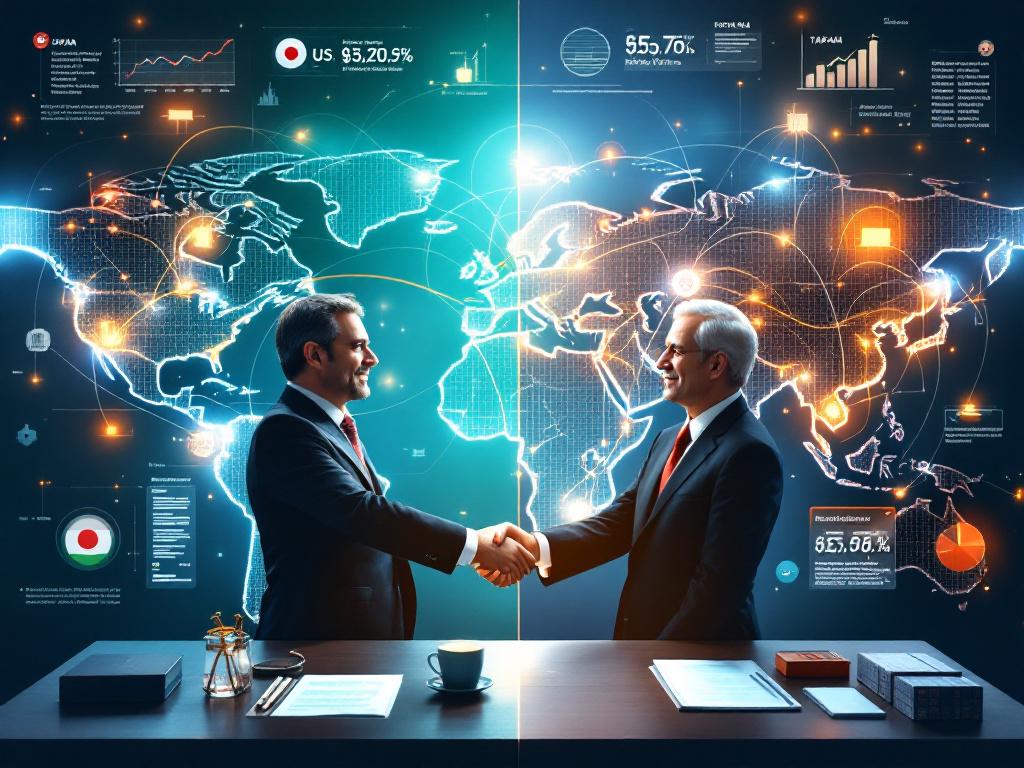Articles in this Cluster
23-04-2025
US Vice-President JD Vance, on a four-day visit to India, called for stronger India-US ties across trade, defense, energy, and technology, saying successful cooperation is crucial for a “prosperous and peaceful” 21st century. His remarks followed a meeting with Prime Minister Narendra Modi, where both sides reported progress toward a bilateral trade deal amid a temporary pause on higher US tariffs that expires 9 July. Vance said terms of reference for negotiations have been finalized, but key sticking points—especially in agriculture—remain, with the US pressing for greater market access and highlighting a lack of reciprocity. Vance also promoted increased US energy and defense sales to India. The visit included personal elements, with Vance’s family engaging in cultural activities in Jaipur and Agra, and Modi indicating he looks forward to hosting President Trump later this year, likely during the Quad summit.
Entities: JD Vance, Narendra Modi, United States, India, bilateral trade deal • Tone: analytical • Sentiment: neutral • Intent: inform
23-04-2025
US Vice President JD Vance arrived in New Delhi with his family for a four-day visit focused on advancing a US-India trade deal, negotiating tariffs, and deepening cooperation in defense, energy, critical technologies, and other strategic areas under the TRUST partnership. He met Prime Minister Narendra Modi, who praised progress on trade talks and conveyed greetings to President Trump ahead of a planned India visit. The trip follows Trump’s recently imposed-and-paused tariffs affecting India and his criticism of India’s trade practices, while both nations seek to double bilateral trade to $500bn by 2030. The visit also aims to counter China’s growing Indo-Pacific influence amid ongoing India-China border tensions. Separately, India raised concerns over US visa revocations affecting Indian students, which Washington denies targeting.
Entities: JD Vance, Narendra Modi, Donald Trump, United States-India trade deal, TRUST partnership • Tone: analytical • Sentiment: neutral • Intent: inform
23-04-2025
The Trump administration is racing to secure dozens of bilateral trade deals within 90 days after imposing sweeping tariffs that have disrupted global commerce, sparked market volatility, and threatened U.S. small businesses reliant on Chinese imports. While President Trump and aides tout rapid progress and claim 90 countries want deals, experts say the timeline is unrealistic, agencies are understaffed, and partners lack clarity on U.S. demands. China trade has largely stalled amid triple-digit tariffs, with both sides signaling the current levels are unsustainable but no substantive talks underway. The White House is exploring ways to ease tariffs with China but insists any de-escalation must be mutual. Negotiations with allies like Japan, South Korea, India, and others are beginning, with some prospects for increased purchases of U.S. goods and investments, yet major disputes and complex projects suggest drawn-out timelines and limited near-term economic gains. Critics warn that attempting scores of simultaneous deals risks supply chain strain, higher inflation, and minimal tangible results before the self-imposed deadline.
Entities: Trump administration, tariffs, bilateral trade deals, China, U.S. small businesses • Tone: analytical • Sentiment: negative • Intent: inform
23-04-2025
As the U.S. and China escalate their trade war, Japan—heavily reliant on U.S. markets for cars and on China for chips and equipment—faces acute pressure to choose sides. The Trump administration is threatening a 24% “reciprocal tariff” on Japan while urging partners to align against China; Beijing warns it will retaliate against countries curbing trade with it. Tokyo, deeply integrated with both economies, resists rapid decoupling from China and is offering limited concessions to the U.S. (e.g., purchases and regulatory tweaks) while maintaining a long-term, hedging strategy. Past efforts to diversify supply chains and invest in “friendshoring” have not eliminated dependence on China, and a U.S. tariff at the threatened level could severely damage Japan’s economy. Japan aims to balance ties with both powers, avoiding an all-or-nothing choice.
Entities: United States, China, Japan, Trump administration, Beijing • Tone: analytical • Sentiment: neutral • Intent: analyze
23-04-2025
US President Donald Trump said his administration may announce revised tariff rates for some trading partners, including China, within two to three weeks. He suggested a potential “special deal” with Beijing and encouraged Chinese officials to visit Washington for talks, noting both sides are in daily contact. Trump referenced the current tariff level at 145% as “very high” and indicated the US could set a new “price” if no deal is reached. The remarks, reported alongside speculation of more targeted tariffs, boosted US markets.
Entities: Donald Trump, China, United States, tariffs, Beijing • Tone: analytical • Sentiment: neutral • Intent: inform
